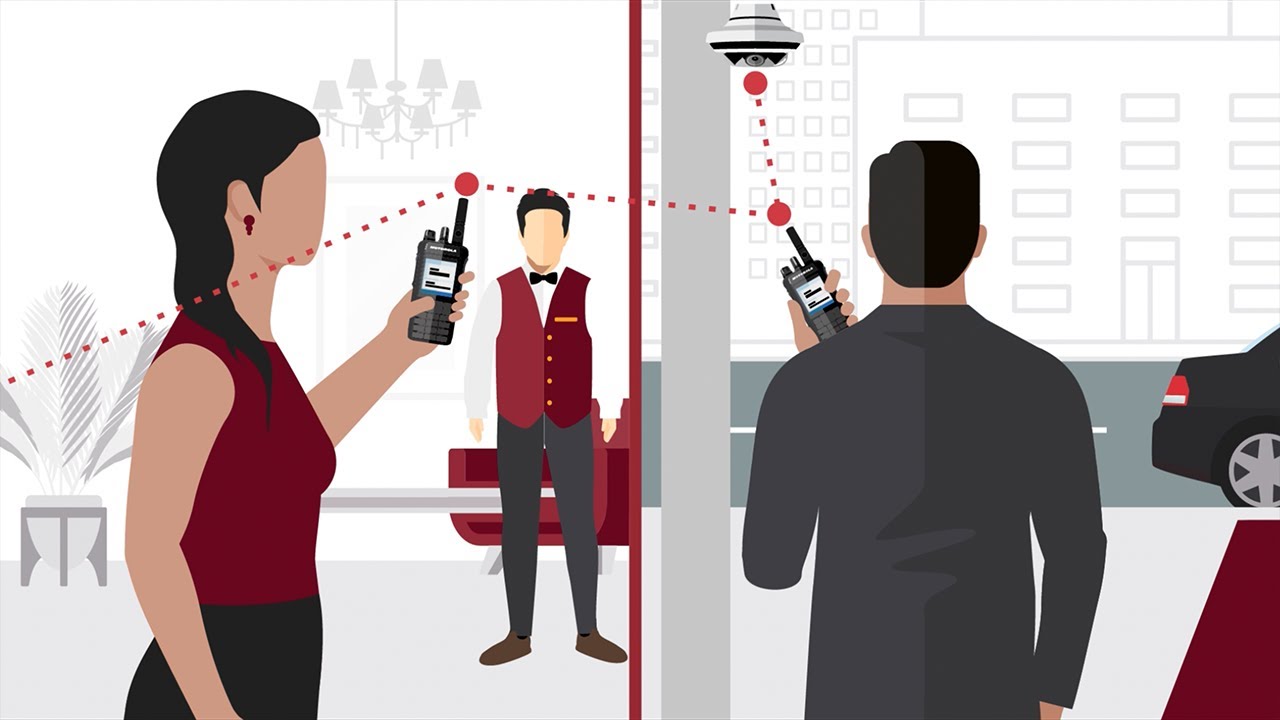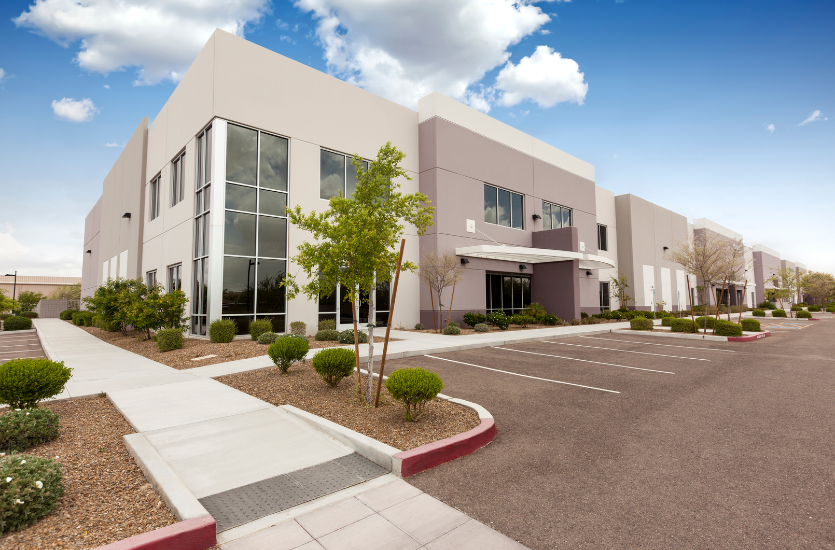Perimeter security refers to the measures and systems implemented to protect the outer boundary of a physical space from unauthorized access and threats. Its primary goal is to establish a first line of defense, reducing the risk of breaches and maintaining the safety and integrity of the assets contained within the secured boundaries.
A considerable number of industries rely heavily on perimeter security to protect their assets, people, and information. Organizations in fields such as healthcare, government manufacturing, retail, and law enforcement often employ robust physical security measures to prevent unauthorized access and safeguard against theft, vandalism, and sabotage.
The Core Components of Perimeter Security
An effective perimeter security system consists of multiple layers designed to prevent, detect, and respond to intrusions. Each layer acts as a distinct line of defense, making it more challenging for potential attackers to penetrate the system. Key elements include:
- Physical barriers: Physical measures help define the boundaries of the secured area.
- Surveillance technology: Surveillance technology enables security teams to effectively monitor and detect suspicious activities in real time.
- Communication tools: Reliable communication tools facilitate real-time information exchange, enabling swift response to potential threats. These include two-way radio systems for response coordination, alarm systems integrated with local law enforcement, and mass notification systems for large-scale emergencies.
By combining these elements into their perimeter security system, organizations can effectively detect and deter a wider range of threats, and coordinate more efficient responses when incidents arise.
Access Control and Physical Barriers
Common physical measures used in perimeter security include fences, gates, walls, and bollards, which act as primary barriers to unauthorized access. Security lighting is also strategically installed to illuminate vulnerable areas or “dark zones” and deter intruders at night.
Additionally, access control systems, such as key cards or biometric scanners, are often employed at entry points to regulate who can enter or exit the premises. In high-security areas, features like anti-vehicle barriers, security personnel patrols, and guardhouses may also be used to enhance overall perimeter security. Various industries implement physical security measures differently based on their unique needs:
- Government and military facilities may use high-security fencing (razor wire, anti-climb barriers), armed personnel, K-9 units, biometric authentication, advanced surveillance (thermal imaging, motion sensors, radar), and blast-resistant barriers.
- Healthcare institutions may use perimeter fencing with controlled entry points, badge-based access control for sensitive areas, security guards, panic alarm systems, and secure storage for pharmaceuticals and biohazards.
- Schools may use fencing and access control gates, visitor management and student ID systems, on-site security and school resource officers, emergency lockdown systems, and mass notification alerts.
- Transportation and logistics organizations may use high-security fencing with motion detection, security checkpoints with screening protocols, and cyber-physical integration to secure logistics networks.
- Retail and warehousing facilities may use perimeter fencing and secured loading docks, RFID and inventory tracking systems, video analytics to detect suspicious behavior, security personnel and vehicle checkpoints, and alarm systems linked to law enforcement.
In all industries, regular maintenance and inspections are crucial to identify and address any vulnerabilities or malfunctions in security systems. It is also vital to conduct frequent security audits and risk assessments to evaluate and enhance the security measures in place. Personnel training is essential too, so that all staff are knowledgeable about security protocols and capable of responding to potential threats.
Surveillance and Monitoring Technologies
Surveillance technologies are a crucial component of perimeter security because they provide multiple layers of protection and deterrence against potential intruders. Security cameras offer real-time monitoring and visual evidence, which helps in identifying and responding to threats promptly.
Motion sensors add another layer of protection by detecting unauthorized movements within a designated area, triggering alarms, and alerting security personnel to potential breaches. Alarms, when activated, alert property owners and security teams, as well as deter intruders by drawing attention to their presence.
Modern AI-powered surveillance systems can significantly enhance response times in perimeter security by automating threat detection and alerting processes. Advanced AI algorithms can quickly analyze vast amounts of data from video feeds, recognizing unusual patterns or potential intrusions in real time — and with greater accuracy than human operators.
This rapid analysis alerts security teams instantaneously, so they can respond more swiftly to potential threats. Additionally, cameras can be integrated with alarm systems to provide instant alerts to security personnel when anomalies are detected, further reducing response times.
The Role of Two-Way Radios in Perimeter Security
Security teams across industries depend on communication systems to swiftly manage and respond to potential threats or breaches. Two-way radios are indispensable tools for these teams because they allow for instant, reliable communication over long distances.
This capability is highly beneficial for quickly disseminating information, issuing alerts, and coordinating responses among team members spread across different locations. Additionally, two-way radios are often more durable and less susceptible to network failures and interference than cellular devices. This way, security teams maintain constant communication even in challenging environments.
Two-way radios are often employed in sensitive environments such as military operations, law enforcement, business communications, and emergency services, where intercepting or eavesdropping on transmissions could lead to serious security breaches or compromised missions.
In these settings, the Advanced Encryption Standard (AES), provides a robust encryption algorithm that protects data from unauthorized access by encrypting voice and data transmissions in real time. This ensures that only authorized devices with the correct decryption keys can access the transmitted information, maintaining privacy and integrity.

How To Choose the Right Two-Way Radios for Security Teams
When selecting a two-way radio system for a security team, you must evaluate several factors to ensure effective communication and operational efficiency. First, assess the coverage range to ensure the radios can operate effectively across the entire area of responsibility, including indoor and outdoor environments.
Second, you’ll need to find a frequency that works for you, as UHF (Ultra High Frequency) and VHF (Very High Frequency) radios differ in their frequency ranges and the applications for which they’re best suited:
- UHF radios operate between 300 MHz and 3 GHz. Shorter wavelengths allow signals to penetrate buildings, walls, and urban environments more effectively.
- VHF radios operate between 30 MHz and 300 MHz. Longer wavelengths travel farther in open spaces but struggle with obstacles like buildings and dense forests.
Ruggedness and durability are also important factors to consider, as security operations often involve working in harsh conditions and require equipment that can withstand drops, dust, and weather. Additionally, the hardware you choose should offer enough battery life to ensure continuous operation during long shifts.
Additionally, it’s important to consider how the features of different radio systems will suit the needs of your industry and organization. Motorola portable two-way radios are available with a range of different features and capabilities, including real-time GPS tracking, text messaging, and status updates.
For example, MOTOTRBO portable radios provide best-in-class network security along with revolutionary features like video security and analytics, making them invaluable communications tools in mission-critical industries. The Motorola MOTOTRBO R7 offers real-time tracking and intelligent audio features, enhancing safety and operational efficiency in industries like construction, transportation, and manufacturing.
Common Threats Addressed by Perimeter Security
Perimeter security is designed to address a variety of threats that could compromise the safety and integrity of a facility or location. While specific security priorities can vary by industry, there are several types of threats all industries need to consider:
- Unauthorized access and intrusion;
- Vandalism and sabotage;
- Theft and burglary;
- Terrorism;
- Espionage and insider threats;
- Natural disasters.
A comprehensive perimeter security system is intended to mitigate these threats by using multiple layers of protection, ensuring that unauthorized access is detected, delayed, and responded to effectively.
Best Practices for Implementing an Effective Perimeter Security Strategy
Implementing an effective perimeter security strategy involves a structured process to identify weaknesses, evaluate potential threats, and implement mitigation strategies. The key steps are:
- Determine which assets to protect, such as people, property, data, and/or infrastructure.
- Identify potential threats, including natural disasters, theft, vandalism, or sabotage.
- Assess the likelihood and potential impact of each identified risk to prioritize them effectively.
- Evaluate the vulnerabilities present, such as inadequate access controls, lack of surveillance, or insufficient lighting.
- Define security goals based on business needs and threat levels.
- Conduct continuous monitoring and regular audits to ensure that the security measures remain effective and adapt to any changing conditions or emerging threats.
Additionally, provide ongoing training to security professionals so they can keep pace with the constantly evolving nature of threats and the continuous advancement of technology. This not only helps to protect critical assets but also enhances the overall security posture of the organization.
By integrating physical, technological, and personnel-based security measures, organizations can create comprehensive defense systems that address a wide array of potential threats and support operational efficiency.






